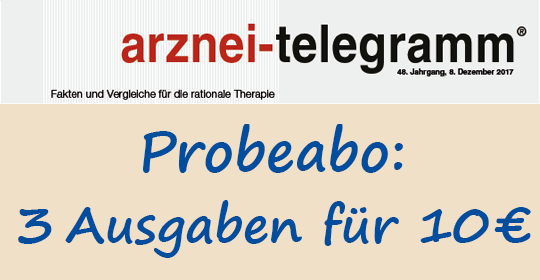CURRENT ADR NETWORK REPORT
Psoriasis also with tocilizumab (ROACTEMRA)?
Following unsatisfactory treatment attempts with methotrexate (LANTAREL, generics) and leflunomide (ARAVA, generics) a patient with rheumatoid arthritis was switched to subcutaneous injections of the interleukin (IL)-6 receptor antagonist tocilizumab (ROACTEMRA; see also a-t 2012; 43: 99-103). After around five months, he complained of itchy, eczematous changes to his skin, which the dermatologist diagnosed as psoriasis that the patient did not have before. Due to additionally increased arthralgias, the 45-year-old also received short-term high-dose prednisolone (DECORTIN H, generics) treatment and switched to the tumour necrosis factor (TNF)-alpha inhibitor adalimumab (HUMIRA). This also improved the psoriasis (NETZWERK report 17.286). Already in 2014, an evaluation of 20 suspected reports to the WHO and four further literature reports indicated that psoriasis can develop or worsen with tocilizumab (1). Since interleukin 6 appears to be involved in the maintenance of the psoriatic inflammatory skin changes (1) and an improvement in psoriasis has been described in patients receiving tocilizumab (2), psoriasis as an undesirable effect of the IL-6 inhibitor initially appears to be implausible. However, several biologics authorised for the treatment of psoriasis may trigger or worsen the disease as a "paradoxical reaction" (1, 2). Psoriasis is currently listed as an undesirable effect in the Summary of Product Characteristics (SPC) for ustekinumab (STELARA) and for the TNF-alpha inhibitors adalimumab, etanercept (ENBREL etc.) and infliximab (REMICADE etc.) (2), but not in the SPC of ROACTEMRA (3).* For tocilizumab, of a total of 18,780 reports of suspected cases the WHO side effects database currently lists psoriasis as an event 85 times (0.5%). For the TNF-alpha inhibitors, the adverse effect is described in 1.5% (infliximab) to 4.8% (etanercept) of the reports (5). Under certain circumstances when use of the suspected agents is not discontinued, topical or systemic treatment of the psoriasis can be considered as an alternative to discontinuation (2, 6).
| 1 | SAVAGE, R: WHO Pharmac. Newsletter 2014, No. 2: 16-21; http://apps.who.int/iris/bitstream/10665/255515/1/WPN-2014-02-eng.pdf?ua=1 |
| 2 | HEYMANS, L., KELLER-STANISLAWSKI, B. (PEI): Bull. z. Arzneimittelsicherheit 2014; No. 3: 14-23; https://www.bfarm.de/SharedDocs/Downloads/DE/Arzneimittel/Pharmakovigilanz/Bulletin/2014/3-2014.pdf?__blob=publicationFile&v=4 |
| 3 | Chugai/Roche: SPC ROACTEMRA s.c., as at Sept. 2017 |
| 4 | Bristol-Myers Squibb: SPC ORENCIA, as at July 2017 |
| 5 | WHO: VigiAccess, accessed Oct. 2017; http://vigiaccess.org |
| 6 | TOUSSIROT, E., AUBIN, F.: RMD Open 2016; 2: e000239 (12 pages) |
| * | Psoriasis is also listed as an adverse effect in the SPCs of the TNF-alpha inhibitors certolizumab (CIMZIA) and golimumab (SIMPONI) and of the T-cell co-stimulation modulator abatacept (ORENCIA) which are authorised for psoriatic arthritis (2, 4). |
© arznei-telegramm, October 2017, protected by copyright laws.
Autor: Redaktion arznei-telegramm - Wer wir sind und wie wir arbeiten
Diese Publikation ist urheberrechtlich geschützt. Vervielfältigung sowie Einspeicherung und Verarbeitung in elektronischen Systemen ist nur mit Genehmigung des arznei-telegramm® gestattet.
